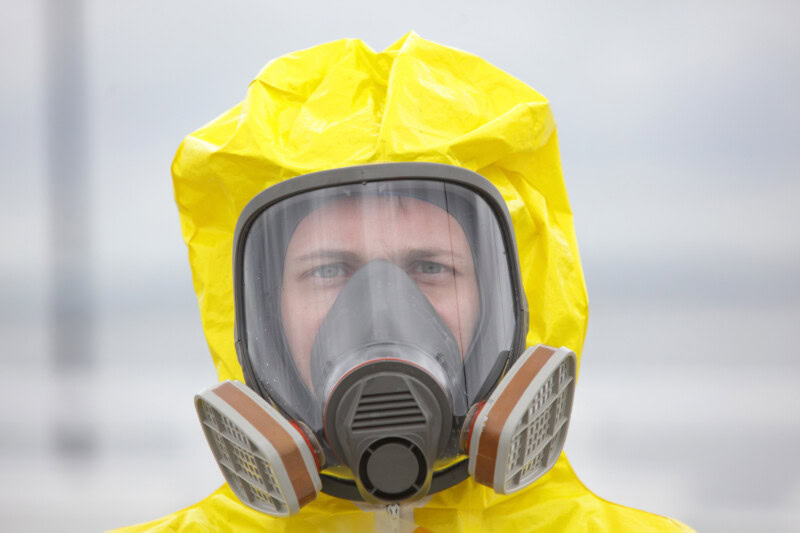From construction to emergency management, millions of American employees are required by the Occupational Health and Safety Administration (OSHA) to wear respirators at their jobs. But what exactly do these devices do? And why is regular fit testing needed to ensure worker safety? CTEH’s experts answer our questions below:
Why are respirators required?
According to OSHA, “increased breathing rates, accelerated heartbeat and impaired thinking or coordination occur more quickly in oxygen-deficient or hazardous atmospheres.” If engineering controls are unable to eliminate these conditions or other toxic substances are present (e.g., dusts, smokes, gases, etc.), workers are required to wear respirators for protection.
Are there different types of respirators?
There are two different classes of respirators: air-purifying or atmosphere-supplying. Air-purifying devices protect workers by filtering out airborne particles or other contaminants (e.g., chemicals, gases). Atmosphere-supplying devices provide clean breathable air through a remote source (i.e., airline respirator) or self-contained breathing apparatus. In general, workers are required to use atmosphere-supplying devices in more hazardous workplace conditions.
When is respirator fit testing required?
As we say at CTEH, “A respirator can’t protect you or your team if it doesn’t fit.” OSHA requires employers to conduct respirator fit testing before workers wear mandatory devices on the job. It also requires respirators to be assessed at least once every 12 months. In addition, testing is mandatory if respirators of new sizes, styles, models or makes are being used or if workers have undergone any significant facial changes (e.g., weight loss, surgery, dental work, scarring, etc.) since the respirator was last assessed.
What does respirator fit testing actually “test” for?
Respirator fit testing “tests” the seal between a worker’s face and the respirator’s facepiece. (NOTE: It is important to distinguish this from a user seal check, which is done each time individuals put on their devices to determine if respirators are properly sealed or need to be readjusted before beginning work.) There are two types of respirator fit tests: qualitative and quantitative. Qualitative is a pass-fail test, which detects leakage by utilizing workers’ sense of taste or smell or their reactions to different irritants (e.g., smoke). A quantitative test, on the other hand, measures the actual amount of leakage into workers’ facepieces with a machine. Qualitative tests are often used for half-mask respirators, or those that cover the mouth and nose, while quantitative tests can be used for any type of tight-fitting respirator.
Need to conduct onsite respirator fit testing? CTEH’s certified occupational and environmental health nurses have extensive experience developing and implementing OSHA-approved respiratory protection programs. Contact us at 501-801-8500.




